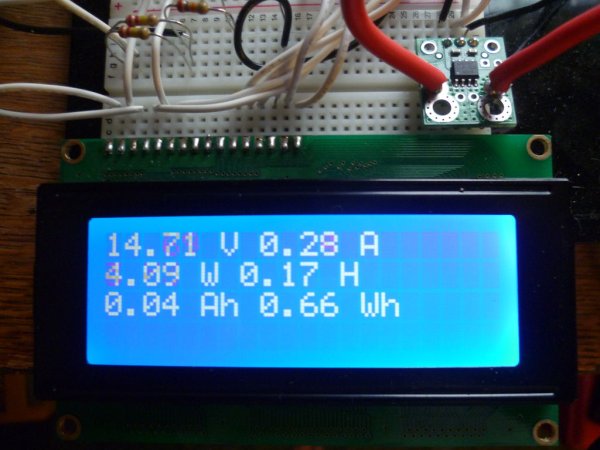If you like this instructable, please vote for it!
For my off-grid Ham Radio and Solar projects, I needed a way to measure volts, amps, watts, amp hours and watt hours. There’s a couple of commercial products that can do this, but not with the flexibility I wanted. I designed a Arduino micro-controller based solution that is very extensible. Right now it monitors the above values of attached gear, and I’m thinking about adding web monitoring and a sd card for data collection. Well, let’s get started.
I’ve changed the resistor values of the voltage divider to get a better impedence match with the Arduino A/D. Ben from Pololu says:
The ADC on an AVR can’t very accurately measure signals with a high output impedance, and your voltage divider definitely counts as high-impedance. From the ATmega328P datasheet:
The ADC is optimized for analog signals with an output impedance of approximately 10 kΩ or less. If such a source is used, the sampling time will be negligible. If a source with higher impedance is used, the sampling time will depend on how long time the source needs to charge the S/H capacitor, with can vary widely. The user is recommended to only use low impedance sources with slowly varying signals, since this minimizes the required charge transfer to the S/H capacitor.
For more detail: DIY Amp Hour Meter – Arduino

